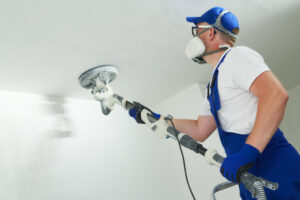The envelope of the house, that is the floors, walls, and ceiling, are the single greatest component affecting the health of its occupants. If you use the relatively inexpensive mainstream methods of today to build your envelope, then you can expect some degree of “sick building syndrome”. If, on the other hand, you invest in a healthy envelope you are well on your way to preventing and avoiding many of the sources of building induced illness that have plagued home and business owners in modern industrial society for decades. Permeability in the right kind of materials does play a profound role in allowing moisture to escape from building materials before mould formation becomes a problem.
Mould eats into organic materials of a building. It can be pathogenic like harmful bacteria. Paints allowing the substrates to breathe and naturally dry can help inhibit mould growth. The wall surface finishes of rooms should be chosen to be capable of absorbing some moisture.
An increasing number of people around the world are suffering from asthma, a condition with symptoms of chest tightening, coughing, difficulty breathing and wheezing. Symptoms vary from day to day and perhaps most importantly from place to place. In the home, organic solvent vapours, wood preservatives and formaldehyde, all of which are found in most conventional decorating products, are key triggers.
“ The first sign of mould is not what you see. It’s a change in how you feel. Sick Building Syndrome really is a building related illness. No one complains about the air in a building unless the air actually bothers them. Once the air starts to bother you, you already have symptoms that are most likely the effects of all the chemicals in the air. The air you breathe can make you feel sick and tired. One of the most common complaints about buildings with poor indoor air quality is fatigue and lethargy. ”
Dr Dave Anderson, PHD – Toxicologist





